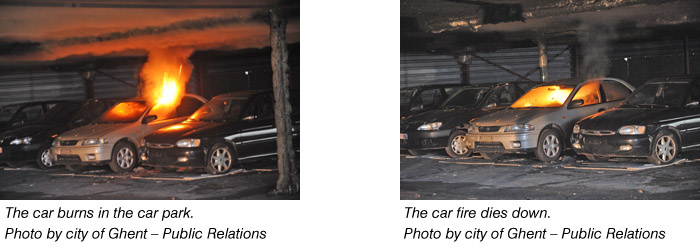A car was dramatically set on fire in a car park in a ‘world first’ test scenario at Warringtonfiregent to help develop safety standards at European and international levels, that will ultimately save lives.
The exercise was part of a major fire safety engineering research project to improve fire detection in car parks and how the effects can be reduced and controlled in the event of a fire breaking out.
The fire test scenario - staged in the car park at Warringtonfiregent in Belgium - examined the smoke and heat extraction systems, where best to position them and the flow of heat and smoke generated by the fire.

Other key areas of testing and data gathering focused on how firefighters intervene and fire detection using infra-red equipment in combination with traditional CCTV cameras to predict fire spread using advanced modelling techniques.
Bart Sette, technical director of Warringtonfiregent, said: “For the first time we can look in-depth at the scientific evidence of what happens to the smoke and heat in a typical car fire in a public car park using all the necessary data we need rather than assume anything.
“This will help inform new European standards being developed for this area of fire safety engineering and ultimately help to protect and save lives.
“This was a landmark in terms of test and research and we intend to analyse everything we have to make sure the benefits are shared with the industry which can help develop test and safety procedures worldwide.”
During the exercise, some of the most sophisticated measurement instrumentation in the world was used to record the findings. The information will be used to feed into the development of the relevant European standard for heat and smoke extraction systems EN 12101-11 (2009).
The project is the result of a collaboration between Warringtonfiregent, Belgium, the Universities of Ghent and Leuven, the Belgian Royal Military School and the Von Karman Institute for fluid dynamics, funded through IWT, the funding agency of the Belgian government. Support was also received from the local Ghent Fire Department.
The findings will be incorporated into the International Master of Science in Fire Safety Engineering course, and the results will be used in the European Up Safety project
to improve the effectiveness of civil protection organisations in underground buildings.
A conference is being staged at the University of Ghent on 30 May, 2011 at which the full findings of the exercise will be presented.